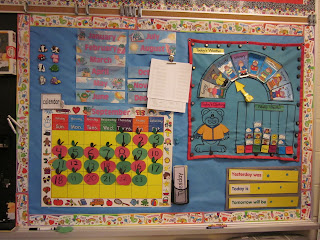For a P.D. opportunity during this years technology showcases we (myself and two of other teaching candidates) plan to demonstrate different uses of the livescribe pen in literacy. We will be discussing two innovative ways to incorporate the livescribe pen as an aid for student writing. We will start by discussing a leading edge method of using the word wall in the classroom followed by a new way to document student retell.
The word wall is a popular element of the primary/junior classroom. The purpose of the word wall is to display frequently used words for students. However, using a word wall to assist students with writing is difficult if students cannot read. We have brainstormed a solution to this barrier through using the livescribe pen as an interactive word wall. We have created a live word wall using the livescribe book. We feel that the live word wall would be most beneficial if placed in a writing centre for student use. If a student is having difficulty spelling a word, he or she may consult the live word wall for assistance. The major benefit of this word wall is that if the student is unable to read to find the correct spelling, he or she can click the words under the initial sound until he or she finds the correct word.
Some of the words we would originally include in the interactive word wall, would be from the Dolch Word list. Teaching The Dolch Word list is a crucial goal of education in grades kingergarten through three. Reading is the most important skill a child will ever learn. Students are expected to be able to read simple sentences and stories by the end of first grade. By third grade they are expected to be able to read almost any kind of text. As well as being able to phonetically decode regularly spelled words, children must also master reading basic, common sight words. Many of the 220 Dolch words cannot be “sounded out” and have to be learned by “sight,” that is memorized. Confidence and reading ability improve when children know the Dolch sight words. The teacher would also add important words to the list during the school year as they arise in literature or other subjects just as one would on a traditional word wall.
The livescribe pen can also be used to retell stories by allowing the students to virtually recall the story while voice recording at the same time. This will allow the student and the teacher to revisit specific events within the story.This very effective tool economizes time for the student and teacher as well as keeping the retell documents in a convenient, organized and assessable format.After being read a story by the teacher, students traditionally need to retell the events to the teacher using pictures. However, using the livescribe pen, students can illustrate what happened at the beginning, middle and end of the story. While they are drawing or after they have finished drawing, students can record themselves retelling the story.
The pen is also a great assessment tool because it allows the teacher to compare past retells to current ones to monitor progress! The teacher could have a file for each student and save the data for regular access.
Following our presentation we will be giving our audience the opportunity to ask various questions regarding our presentation on the livescribe pen and literacy. We will also be encouraging them to take the opportunity to write any potential uses they see for the livescribe pen in literacy on the table cloth as a collaborative exchange of ideas.
We will also post a post-workshop blog about our experiences presenting at the event. Stay tuned...
Please visit the blogs of other two members of my group who also collaborated to make this presentation and blog possible. This is our authentic example of collaborative teaching:
http://incorporatingtech2classroom.blogspot.com
*photo taken from: http://www.lovingthroughliteracy.com/site/index-6.html



